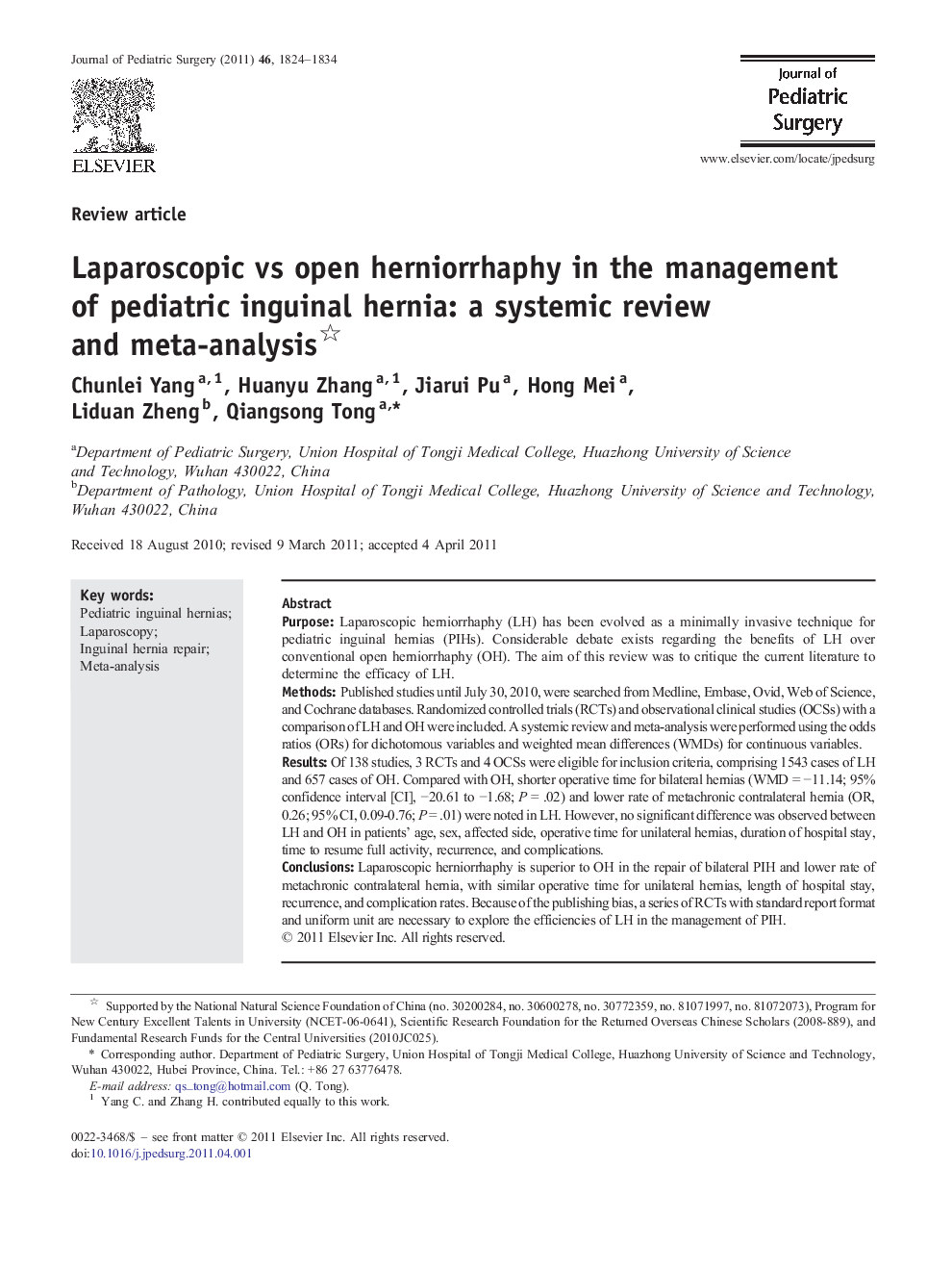| Article ID | Journal | Published Year | Pages | File Type |
|---|---|---|---|---|
| 4156970 | Journal of Pediatric Surgery | 2011 | 11 Pages |
PurposeLaparoscopic herniorrhaphy (LH) has been evolved as a minimally invasive technique for pediatric inguinal hernias (PIHs). Considerable debate exists regarding the benefits of LH over conventional open herniorrhaphy (OH). The aim of this review was to critique the current literature to determine the efficacy of LH.MethodsPublished studies until July 30, 2010, were searched from Medline, Embase, Ovid, Web of Science, and Cochrane databases. Randomized controlled trials (RCTs) and observational clinical studies (OCSs) with a comparison of LH and OH were included. A systemic review and meta-analysis were performed using the odds ratios (ORs) for dichotomous variables and weighted mean differences (WMDs) for continuous variables.ResultsOf 138 studies, 3 RCTs and 4 OCSs were eligible for inclusion criteria, comprising 1543 cases of LH and 657 cases of OH. Compared with OH, shorter operative time for bilateral hernias (WMD = −11.14; 95% confidence interval [CI], −20.61 to −1.68; P = .02) and lower rate of metachronic contralateral hernia (OR, 0.26; 95% CI, 0.09-0.76; P = .01) were noted in LH. However, no significant difference was observed between LH and OH in patients' age, sex, affected side, operative time for unilateral hernias, duration of hospital stay, time to resume full activity, recurrence, and complications.ConclusionsLaparoscopic herniorrhaphy is superior to OH in the repair of bilateral PIH and lower rate of metachronic contralateral hernia, with similar operative time for unilateral hernias, length of hospital stay, recurrence, and complication rates. Because of the publishing bias, a series of RCTs with standard report format and uniform unit are necessary to explore the efficiencies of LH in the management of PIH.
